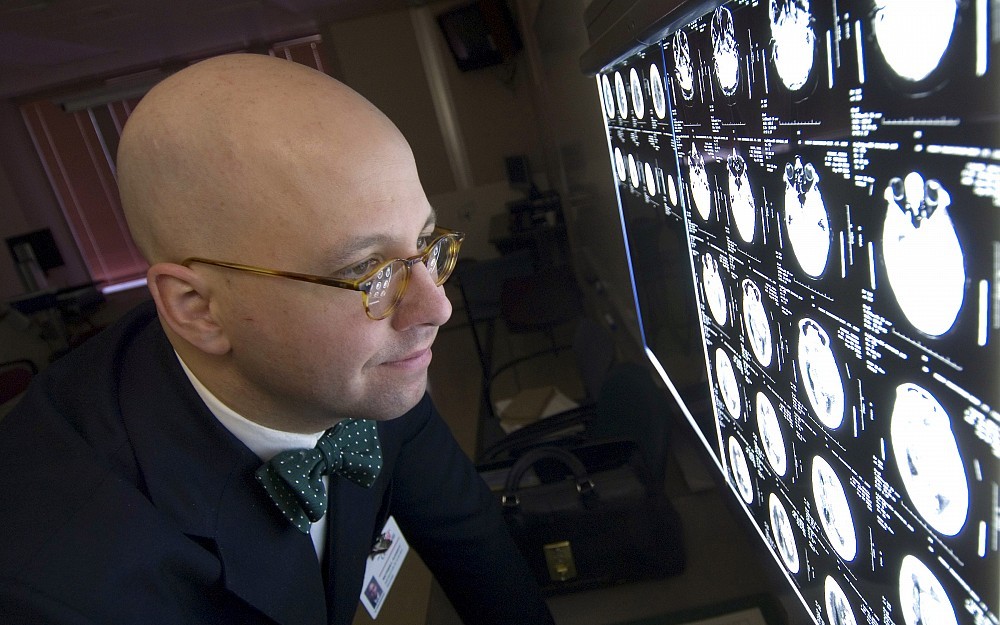
Drug Linked to Increased Cases of Brain Hemorrhage
CINCINNATIThe rate of intracerebral (brain) hemorrhages associated with blood-thinning drugs quintupled during the 1990s, and in people over 80 the rate increased more than 10-fold, according to a University of Cincinnati (UC) study published in the Jan. 9, 2007, issue of the journal Neurology.
The increase in hemorrhage, says UC assistant professor and study author Matthew Flaherty, MD, is due to greater use of the drug warfarin, which is commonly prescribed to prevent blood clotting but carries the side-effect of bleeding.
The use of warfarin increased in the 1990s after studies showed it reduced the risk of stroke caused by blood clots for people with atrial fibrillation, a condition that causes irregular heart rhythm and becomes more common as people age. Blood clots can lead to ischemic stroke, the most common type of stroke. An intracerebral hemorrhage is a stroke caused by bleeding in the brain.
For the study, researchers identified all patients in the greater Cincinnati area hospitalized with a first-time intracerebral hemorrhage during three time periods: 1988, 1993 to 94, and 1999. In 1988, the annual rate of intracerebral hemorrhages associated with use of blood-thinning drugs was 0.8 cases per 100,000 people. In 1999, the rate was 4.4 cases per 100,000 people. For people age 80 and older, the rate increased from 2.5 in 1988 to 45.9 in 1999.
Because warfarin is currently the best way to prevent blood clots in patients with atrial fibrillation, Flaherty cautions that its use should not necessarily be discontinued.
Warfarin is highly effective in preventing ischemic stroke among people with atrial fibrillation, said Flaherty. For many people, the benefits of preventing ischemic stroke continue to outweigh the risk of a hemorrhagic stroke.
Our findings should not discourage the use of warfarin when its appropriate. Doctors can use these findings to make sure they are weighing the risks and benefits of warfarin use for their patients. For researchers, these results may stimulate efforts to develop safer alternatives to warfarin and better treatments for people with brain hemorrhages.
Stroke is the third leading cause of death in the United States. The Centers for Disease Control and Prevention (CDC) estimates that in the United States, about 700,000 strokes occur each year500,000 being first or new strokes.
The study was supported in part by the National Institute of Neurological Disorders and Stroke.
Coauthors include Kathleen Alwell, Joseph Broderick, MD, Mary Haverbusch, Brett Kissela, MD, Dawn Kleindorfer, MD, Charles Moomaw, PhD, Padmini Sekar, and Daniel Woo, MD, all of the University of Cincinnati.

Matthew Flaherty, MD, is studying the effects of the blood-thinning drug warfarin on stroke patients.

Stroke researcher Dawn Kleindorfer, MD

Joseph Broderick, MD
Tags
Related Stories
UC study: Brain organ plays key role in adult neurogenesis
July 2, 2024
The University of Cincinnati has published research in the Proceedings of the National Academy of Sciences that found the choroid plexus and cerebrospinal fluid play a key role in maintaining a pool of newly born neurons to repair the adult brain after injury.
Put down that beer; it's not a tanning lotion
July 1, 2024
The University of Cincinnati's Kelly Dobos joined WVXU's Cincinnati Edition to discuss what's fact and what's myth when it comes to sunscreen use, different kinds of sunscreen and a social media recommendation to use beer on your skin to help get a tan.
Cincinnati researchers want to know if MRIs can work better
June 28, 2024
WVXU and the Cincinnati Business Courier highlighted a new collaboration between the University of Cincinnati College of Medicine, UC Health GE HealthCare, JobsOhio, REDI Cincinnati and Cincinnati Children’s to create an MRI Research and Development Center of Excellence located on UC’s medical campus.
